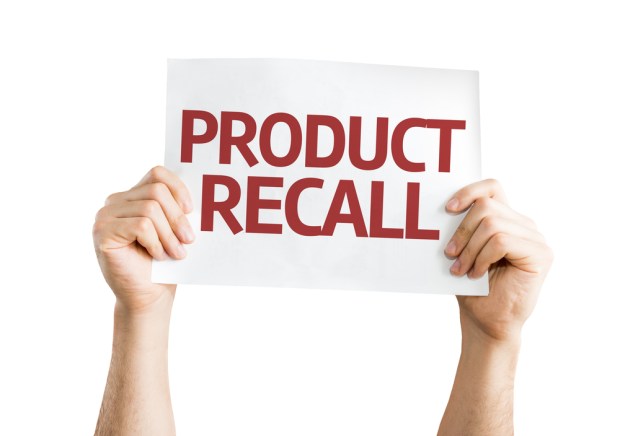The Good News About All Those Grocery Recalls

It has been a good month to be a Listeria monocytogenes bacteria, the cause of a mostly ignored disease that causes mild flu like symptoms in the otherwise healthy (though the very young, very old, immuno compromised and pregnant all face serious health risk from exposure) and doesn’t really occur all that often. Very rarely does anyone get all that excited Listeria.
Until Listeria stands behind a wave of product recalls — at which time it becomes headline news, particularly when it is attached to headline players, which this latest run of recalls most certainly is. Ever since CRF Frozen Foods first announced a voluntary recall of a handful of vegetable products over possible contamination earlier this spring, the great Listeria discovery run as roped in ConAgra and The Pictsweet Company — and popped up at the nation’s most recognizable retailers like Costco, Trader Joe’s, Harris Teeter and Kroger.
And that is a very abridged list. In the last several weeks, there have been at least 41 listeria recalls issued, according to the FDA Food Safety Database, covering consumers in all 50 American states.
Those recalls cover 350 products, 41 brands and 47 million pounds of meat and poultry products, which are now added to the list of tainted frozen vegetables, rice mixes, cold salads and bread products that have been ruled possibly tainted and thus were pulled from store shelves, according to the U.S. Department of Agriculture.
If a bacteria could have a star is born moment, this would be Listeria’s.
Now Listeria is generally not dangerous to healthy adults, but it does have a 13 percent fatality rate for those infected, making it far more dangerous than salmonella, the most common form of food contamination.
And of course all the destroyed food will be worth millions in lost product for merchants and potentially increased costs for consumers.
This might make it sound as though this story is all downside, when in fact the scale and scope of this particular Listeria outbreak is a bit inspirational, if one looks at it correctly.
Food recalls are actually incredibly common; one happens on average each day in the United States, though usually the issue at hand is contamination with allergens. Headlines start rolling in when bacterial contamination is the issue, and the story is almost always about a host of consumers who ended up ill or worse.
In 2009, for example, a mass contamination incident at the Peanut Corporation of America that saw 2,000 products get recalled and nine people died of salmonella poisoning. The company’s owner and operator, Stewart Parnell, is currently serving a 28-year prison sentence, since he rather famously said “just ship it,” despite being extensively warned the product was dangerous.
This time around though, Listeria hasn’t made anyone gravely ill. These products have been destroyed out of caution, not because anyone has actually come down with the disease.
And the mechanism by which so many products were quickly run down and recalled actually hints at progress in backend management that could really and truly help prevent lots of consumer foodborne illness down the line.
As Michigan State University food science professor Elliott Ryser noted, the recalls were triggered by flags in the inspection process, not by an outbreak of mass illness.
“It’s a sign that the nation’s food inspection process is actually getting stronger.”
And that strength is pushed along the CDC and gene sequencing technology.
“The [Centers for Disease Control] has gone to what they call ‘whole-genome sequencing’ to identify Listeria and other pathogens. It’s more sensitive than what we’ve used in the past,” Ryser further notes.
Once Listeria was in the CDC’s database, it became much easier to easily and quickly match new samples found during routine inspections with those from organisms known to have caused outbreaks in prior years. Manufacturers and merchants as a result can quickly and voluntarily pull questionable items from the shelves, hopefully long before anyone gets seriously sickened.
This of course will only be useful in cases where matching is possible. New strains will be immune from detection, because they will have no antecedent to match to, nor will it work against the Stewart Parnells of the world who knowingly ship poisoned peanuts to consumers.
But for brands and stores who on the whole would prefer not to kill or seriously injure their buyers, the fact that getting ahead of the problem is now possible is unequivocal good news.
Even if it means every so often a humble bacteria like Listeria will get a moment in the sun, without actually successfully sickening a whole lot of people.